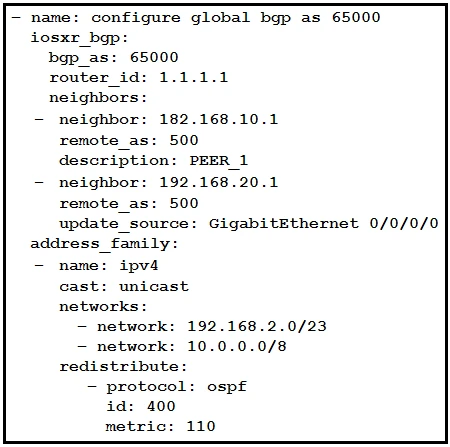When configuring a destination group to use dial-out telemetry with gRPC on a Cisco IOS XR platform, it is essential to specify the destination IP address, destination port, encoding, and protocol. These parameters ensure that the telemetry data is correctly sent to the desired endpoint using the appropriate encoding format and communication protocol (gRPC in this case).
Cisco WAN Automation Engine (WAE) primarily focuses on network design, planning, and optimization, leveraging network abstraction which includes topology, configuration, and traffic details. One of its main use cases is integrating with Cisco XTC (Crosswork Traffic Controller) to enhance network control and optimizations. Additionally, WAE is commonly used for performing what-if analysis, where it can simulate and analyze network failures, topology changes, and traffic demands to aid in decision-making and planning.

Refer to the exhibit. What is the result of the Ansible task?
The NETCONF (Network Configuration Protocol) protocol uses XML as the default encoding mechanism for all remote procedure call (RPC) requests and responses. XML allows device configuration elements to be enclosed within messages, enabling structured data to be exchanged between a client and a server in a robust and standardized way. Thus, for NETCONF implemented device configurations, XML is integral to the protocol's function.